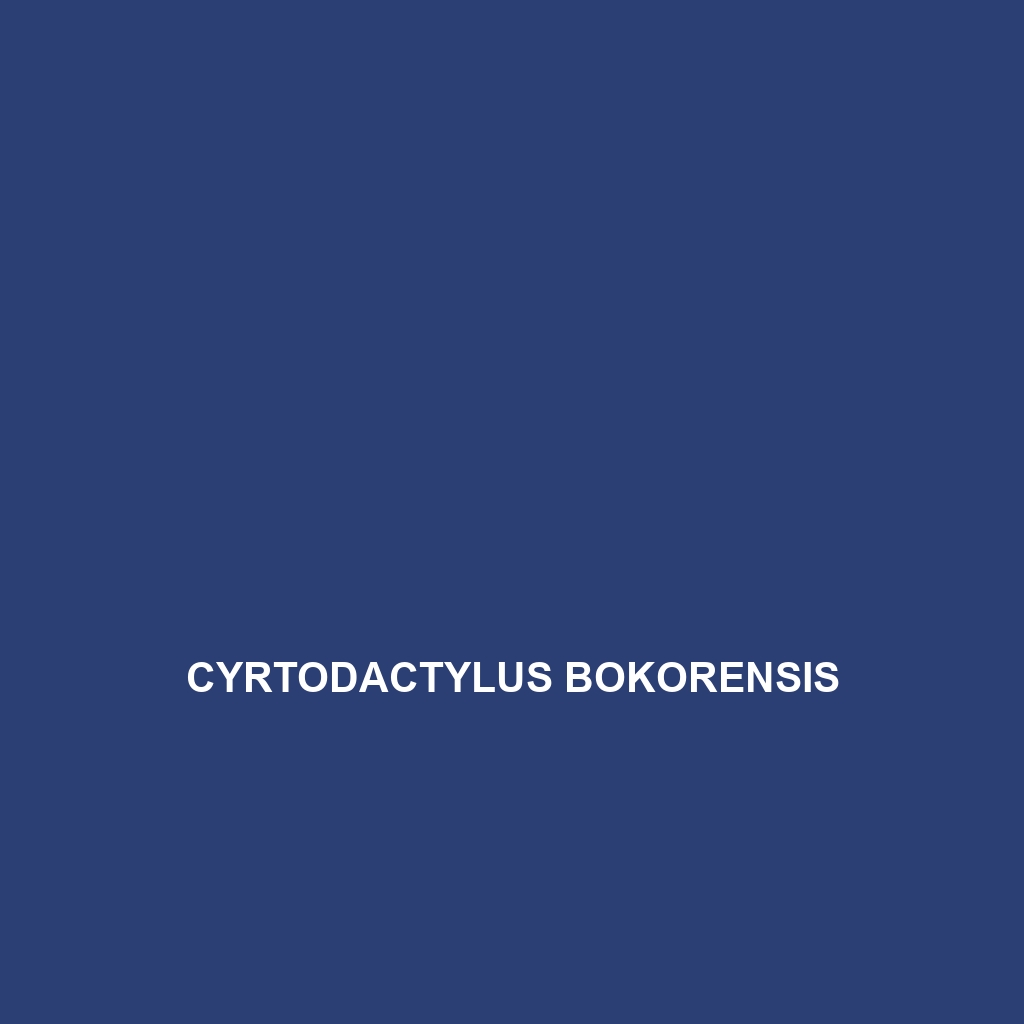Cyrtodactylus bokorensis Species Description
Common Name: Cyrtodactylus bokorensis
Scientific Name: Cyrtodactylus bokorensis
Habitat
Cyrtodactylus bokorensis is primarily found in the tropical rainforests of southeastern Cambodia, particularly in the Bokor National Park region. This gecko species prefers humid environments characterized by dense foliage, rocky outcrops, and elevations ranging from 800 to 1,000 meters above sea level. The unique microhabitats within these forests provide shelter and optimal conditions for breeding and feeding.
Physical Characteristics
This species typically measures between 8 to 12 centimeters in length. Cyrtodactylus bokorensis exhibits a distinct coloration that includes sandy beige to light brown hues with darker speckling, enabling it to blend seamlessly into its surroundings. Notable features include large, prominent eyes, granular scales, and a distinctly elongated body, which aid in climbing and maneuvering through complex forest structures.
Behavior
Cyrtodactylus bokorensis is predominantly nocturnal, exhibiting typical crepuscular activity patterns. During the day, it seeks refuge in rocky crevices and under fallen leaves, emerging at night to hunt. This gecko is known for its agile climbing abilities and often displays territorial behaviors, including vocalizations and physical displays to ward off potential rivals.
Diet
The diet of Cyrtodactylus bokorensis primarily consists of small insects and invertebrates, such as crickets, moths, and beetles. These food sources are abundant within the humid forest environment, providing the necessary nutrients for growth and reproduction. Its predatory adaptations, including a swift tongue and keen eyesight, enhance its feeding efficiency.
Reproduction
Cyrtodactylus bokorensis engages in seasonal breeding, typically occurring during the wetter months from May to September. Females are known to lay two eggs per clutch, which are deposited in concealed locations to protect them from predators. Offspring are miniature versions of adults and receive no parental care post-hatching.
Conservation Status
Currently, Cyrtodactylus bokorensis is classified as vulnerable due to habitat loss caused by deforestation and human encroachment. Conservation efforts are essential to ensure the survival of this unique species, highlighting the importance of habitat preservation within Cambodia’s rainforests.
Interesting Facts
Cyrtodactylus bokorensis exhibits a unique ability to change its color slightly in response to environmental factors, aiding in camouflage against predators. Additionally, it is a relatively newly identified species within the Cyrtodactylus genus, making it of particular interest to herpetologists and wildlife enthusiasts alike.
Role in Ecosystem
This gecko plays a significant role in its ecosystem as both a predator and prey. By controlling insect populations, Cyrtodactylus bokorensis contributes to the ecological balance. Moreover, it serves as a food source for various larger predators, thereby maintaining the food web’s integrity within its rainforest habitat.
